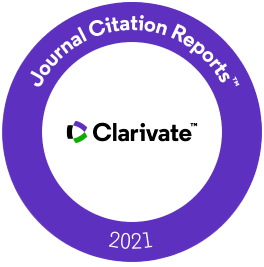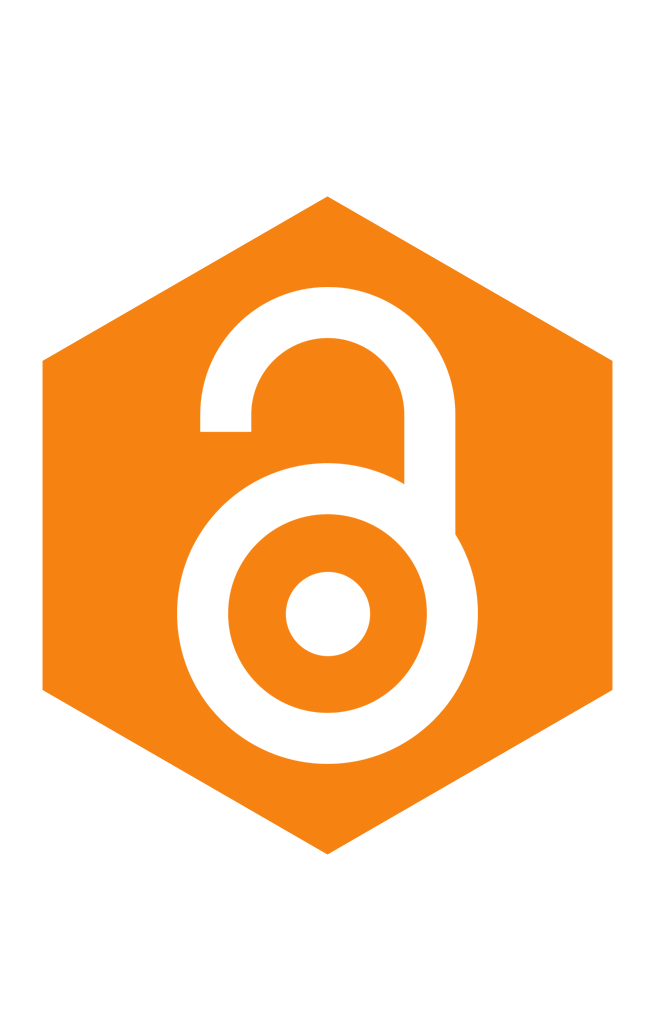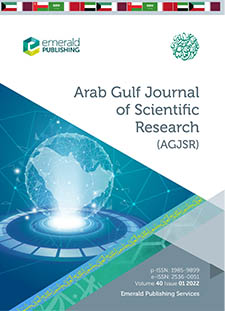Arab Gulf Journal of Scientific Research












The Arab Gulf Journal of Scientific Research is an academic, open access, peer reviewed journal owned by Arabian Gulf University, which welcomes both theoretical and empirical submissions in natural resources sciences, medical sciences, biotechnology, computer science and applications, innovation, entrepreneurship, and management sciences, and educational sciences. The first AGJSR Volume was published on 1983 by the Arab Bureau of Education for the Gulf States (Riyadh, Saudi Arabia) under the ISSN 1015-4442. Then in 1999 the Journal moved to a new publisher who is the Arabian Gulf University under the ISSN 1985-9899. The journal is currently published by Emerald on behalf of Arabian Gulf University.
The Arab Gulf Journal of Scientific Research (AGJSR) publishes peer review research covering all aspects of pure, natural resources, management, computer, innovation, biotechnology, and educational sciences. The journal welcomes research, viewpoint, technical, conceptual, literature review, policy brief, and case study paper. The title covers but is not limited to the following research topic:
All articles are published Open Access, so are made freely available at no charge to the author.
The Arab Gulf Journal of Scientific Research is covered by and indexed in:
Currently AGJSR is being published by the Arabian Gulf University (Bahrain) with the Print (ISSN): 1985-9899 and the Electronic (E-ISSN): 2536-0051
The journal’s policy is open access and creative commons. Authors retain their rights to republish this material in other works written or edited by them, subject to full acknowledgement of the original source of publication.
Please prepare your manuscript before submission, using the following guidelines:
|
Format |
Article files should be provided in Microsoft Word format. LaTex files can be used if an accompanying PDF document is provided. PDF as a sole file type is not accepted, a PDF must be accompanied by the source file. Acceptable figure file types are listed further below. |
|
Article Length |
Articles should be a maximum of 8000 words in length. This includes all text including references and appendices. Please allow 280 words for each figure or table. |
|
Article Title |
A concisely worded title should be provided |
|
Author details |
All contributing authors’ names should be added to the ScholarOne submission, and their names arranged in the correct order for publication.
|
|
Biographies and acknowledgements |
Authors who wish to include these items should save them together in an MS Word file to be uploaded with the submission. If they are to be included, a brief professional biography of not more than 100 words should be supplied for each named author. |
|
Structured Abstract |
Authors must supply a structured abstract in their submission, set out under 4-7 sub-headings (see our “How to… write an abstract” guide for practical help and guidance):
Maximum is 250 words in total (including keywords and article classification, see below). Authors should avoid the use of personal pronouns within the structured abstract and body of the paper (e.g. “this paper investigates…” is correct, “I investigate…” is incorrect). |
|
Keywords |
Authors should provide appropriate and short keywords in the ScholarOne submission that encapsulate the principal topics of the paper (see the How to… ensure your article is highly downloaded guide for practical help and guidance on choosing search-engine friendly keywords). The maximum number of keywords is 12. Whilst Emerald will endeavour to use submitted keywords in the published version, all keywords are subject to approval by Emerald’s in house editorial team and may be replaced by a matching term to ensure consistency. |
|
Article Classification |
Authors must categorize their paper as part of the ScholarOne submission process. The category which most closely describes their paper should be selected from the list below. Research paper. This category covers papers which report on any type of research undertaken by the author(s). The research may involve the construction or testing of a model or framework, action research, testing of data, market research or surveys, empirical, scientific or clinical research. Viewpoint. Any paper, where content is dependent on the author’s opinion and interpretation, should be included in this category; this also includes journalistic pieces. Technical paper. Describes and evaluates technical products, processes or services. Conceptual paper. These papers will not be based on research but will develop hypotheses. The papers are likely to be discursive and will cover philosophical discussions and comparative studies of others’ work and thinking. Case study. Case studies describe actual interventions or experiences within organizations. They may well be subjective and will not generally report on research. A description of a legal case or a hypothetical case study used as a teaching exercise would also fit into this category. Literature review. It is expected that all types of paper cite any relevant literature so this category should only be used if the main purpose of the paper is to annotate and/or critique the literature in a particular subject area. It may be a selective bibliography providing advice on information sources or it may be comprehensive in that the paper’s aim is to cover the main contributors to the development of a topic and explore their different views. Policy Briefs. A Policy Briefs presents a concise summary of information that can help readers understand, and likely make decisions about, government or organizational policy. Policy briefs may be fast-tracked for immediate publication because they are considered very timely. |
|
Headings |
Headings must be concise, with a clear indication of the distinction between the hierarchy of headings. The preferred format is for first level headings to be presented in bold format and subsequent sub-headings to be presented in medium italics. |
|
Notes/Endnotes |
Notes or Endnotes should be used only if absolutely necessary and must be identified in the text by consecutive numbers, enclosed in square brackets and listed at the end of the article. |
|
Figures |
All Figures (charts, diagrams, line drawings, web pages/screenshots, and photographic images) should be submitted in electronic form. All Figures should be of high quality, legible and numbered consecutively with arabic numerals. Graphics may be supplied in colour to facilitate their appearance on the online database.
|
|
Tables |
Tables should be typed and included in a separate file to the main body of the article. The position of each table should be clearly labelled in the body text of article with corresponding labels being clearly shown in the separate file. Ensure that any superscripts or asterisks are shown next to the relevant items and have corresponding explanations displayed as footnotes to the table, figure or plate. |
|
References |
References to other publications must be in APA style and carefully checked for completeness, accuracy and consistency. This is very important in an electronic environment because it enables your readers to exploit the Reference Linking facility on the database and link back to the works you have cited through CrossRef. You should cite publications in the text: (Adams, 2006) using the first named author’s name or (Adams and Brown, 2006) citing both names of two, or (Adams et al., 2006), when there are three or more authors. At the end of the paper a reference list in alphabetical order should be supplied: |
|
For books |
Surname, Initials (year), Title of Book, Publisher, Place of publication. e.g. Harrow, R. (2005), No Place to Hide, Simon & Schuster, New York, NY. |
|
For book chapters |
Surname, Initials (year), “Chapter title”, Editor’s Surname, Initials, Title of Book, Publisher, Place of publication, pages. e.g. Calabrese, F.A. (2005), “The early pathways: theory to practice – a continuum”, in Stankosky, M. (Ed.), Creating the Discipline of Knowledge Management, Elsevier, New York, NY, pp. 15-20. |
|
For journals |
Surname, Initials (year), “Title of article”, Journal Name, volume issue, pages. e.g. Capizzi, M.T. and Ferguson, R. (2005), “Loyalty trends for the twenty-first century”, Journal of Consumer Marketing, Vol. 22 No. 2, pp. 72-80. |
|
For published |
Surname, Initials (year of publication), “Title of paper”, in Surname, Initials (Ed.), Title of published proceeding which may include place and date(s) held, Publisher, Place of publication, Page numbers. e.g. Jakkilinki, R., Georgievski, M. and Sharda, N. (2007), “Connecting destinations with an ontology-based e-tourism planner”, in Information and communication technologies in tourism 2007 proceedings of the international conference in Ljubljana, Slovenia, 2007, Springer-Verlag, Vienna, pp. 12-32. |
|
For unpublished |
Surname, Initials (year), “Title of paper”, paper presented at Name of Conference, date of conference, place of conference, available at: URL if freely available on the internet (accessed date). e.g. Aumueller, D. (2005), “Semantic authoring and retrieval within a wiki”, paper presented at the European Semantic Web Conference (ESWC), 29 May-1 June, Heraklion, Crete, available at: http://dbs.uni-leipzig.de/file/aumueller05wiksar.pdf (accessed 20 February 2007). |
|
For working papers |
Surname, Initials (year), “Title of article”, working paper [number if available], Institution or organization, Place of organization, date. e.g. Moizer, P. (2003), “How published academic research can inform policy decisions: the case of mandatory rotation of audit appointments”, working paper, Leeds University Business School, University of Leeds, Leeds, 28 March. |
|
For encyclopedia entries |
Title of Encyclopedia (year) “Title of entry”, volume, edition, Title of Encyclopedia, Publisher, Place of publication, pages. e.g. Encyclopaedia Britannica (1926) “Psychology of culture contact”, Vol. 1, 13th ed., Encyclopaedia Britannica, London and New York, NY, pp. 765-71. (For authored entries please refer to book chapter guidelines above) |
|
For newspaper |
Surname, Initials (year), “Article title”, Newspaper, date, pages. e.g. Smith, A. (2008), “Money for old rope”, Daily News, 21 January, pp. 1, 3-4. |
|
For newspaper |
Newspaper (year), “Article title”, date, pages. e.g. Daily News (2008), “Small change”, 2 February, p. 7. |
|
For archival or other unpublished sources |
Surname, Initials, (year), “Title of document”, Unpublished Manuscript, collection name, inventory record, name of archive, location of archive. e.g. Litman, S. (1902), “Mechanism & Technique of Commerce”, Unpublished Manuscript, Simon Litman Papers, Record series 9/5/29 Box 3, University of Illinois Archives, Urbana-Champaign, IL. |
|
For electronic sources |
If available online, the full URL should be supplied at the end of the reference, as well as a date that the resource was accessed. e.g. Castle, B. (2005), “Introduction to web services for remote portlets”, available at: http://www-128.ibm.com/developerworks/library/ws-wsrp/ (accessed 12 November 2007). Standalone URLs, i.e. without an author or date, should be included either within parentheses within the main text, or preferably set as a note (roman numeral within square brackets within text followed by the full URL address at the end of the paper). |
Articles submitted to the journal should not have been published before in their current or substantially similar form, or be under consideration for publication with another journal. Please see Emerald’s originality guidelines for details. Authors submitting articles for publication warrant that the work is not an infringement of any existing copyright and will indemnify the publisher against any breach of such warranty.
The editor may make use of iThenticate software for checking the originality of submissions .
This is an open access journal. All works are published under Creative Commons CC-BY license which means that all content is freely available without charge to the user or his/her institution. Users are allowed to read, download, copy, distribute, print, search, or link to the full texts of the articles, or use them for any other lawful purpose, without asking prior permission from the publisher or the author.
View the license in more detail.
Upon acceptance of an article authors will be requested to sign a Creative Commons Attribution Licence 4.0 (CC BY 4.0).
Publishing under a CC BY 4.0 license means:
· Full attribution to the original work must be included in any derivatives, indicating if/where changes have been made.
Authors will be asked to complete the CC BY 4.0 licence through ScholarOne. All authors are sent an email with links to the licence form, which they must check for accuracy and submit electronically.














